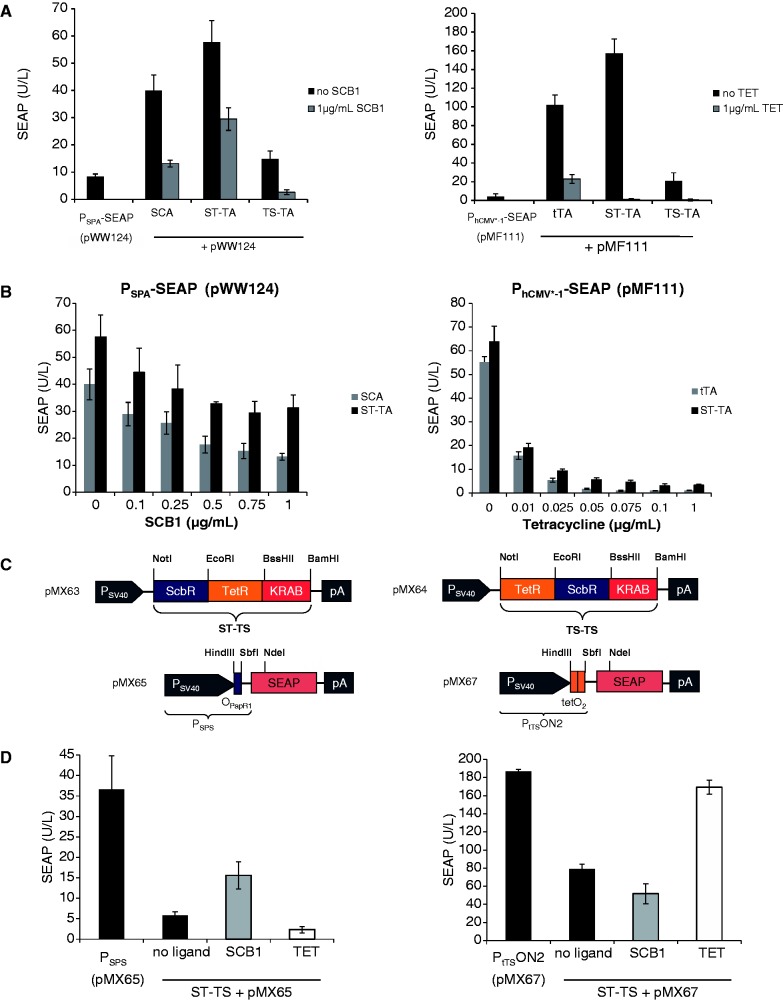Figure 2.
Performance of bipartite TetR-family transcription factors. (A) Regulation characteristics of the ScbR-TetR-VP16 (ST-TA) and TetR-ScbR-VP16 (TS-TA) transactivators. HEK-293T cells were co-transfected with ST-TA (pMX1) or TS-TA (pMX10) and either PhCMV*−1- (pMF111) or PSPA- (pWW124) driven SEAP expression vectors. Isogenic cultures expressing tTA (pSAM200) or SCA (pWW122) instead of ST-TA (pMX1) were used as controls. Cells were grown for 48 h in the presence or absence of the trigger molecules TET or the γ-butyrolactone (SCB1) before the SEAP levels in the culture supernatant were quantified. (B) TET- and γ-butyrolactone- (SCB1) adjustable ST-TA-driven transgene expression. HEK-293T cells were transfected with either pMX1/pWW124 or pMX1/pMF111 and cultivated for 48 h in the presence of different concentrations of TET or SCB1 before SEAP was scored in the culture supernatant. HEK-293T transfected with either tTA (pSAM200) or SCA (pWW122) instead of ST-TA (pMX1) were used as controls. (C) Synthetic bipartite TetR-family repressor-derived mammalian transsilencers. Tandem TetR-family repressor-derived mammalian transsilencer variants assembled by fusing the TET- and γ-butyrolactone-dependent repressor proteins (TetR, ScbR) to the KRAB domain of the human kox-1 gene. Corresponding target promoters contain specific operator sites (tetO2, OPapR1) immediately 3′ of the constitutive simian virus 40 promoter (PSV40) and control expression of the human placental SEAP. (D) Performance of the ScbR-TetR-KRAB (ST-TS) and TetR-ScbR-KRAB (TS-TS) transsilencers. HEK-293T cells were co-transfected with ST-TS (pMX63) or TS-TS (pMX64) and either PSPS- (pMX65) or PtTSON2- (pMX67) driven SEAP expression vectors and grown for 48 h in the presence (1 µg/ml) or absence of the trigger molecules TET or the γ-butyrolactone (SCB1) before SEAP levels were scored in the culture supernatant. Isogenic cultures transfected with either pMX65 or pMX67, but no transsilencer-encoding plasmids were used as controls.

